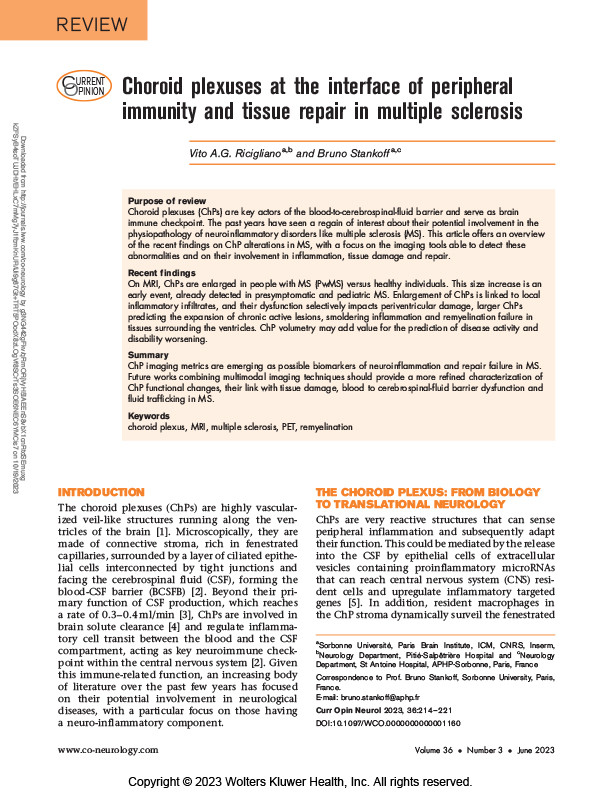Choroid plexuses at the interface of peripheral immunity and tissue repair in multiple sclerosis
Jun 23
Purpose of review
Choroid plexuses (ChPs) are key actors of the blood-to-cerebrospinal-fluid barrier and serve as brain immune checkpoint. The past years have seen a regain of interest about their potential involvement in the physiopathology of neuroinflammatory disorders like multiple sclerosis (MS). This article offers an overview of the recent findings on ChP alterations in MS, with a focus on the imaging tools able to detect these abnormalities and on their involvement in inflammation, tissue damage and repair.
Recent findings
On MRI, ChPs are enlarged in people with MS (PwMS) versus healthy individuals. This size increase is an early event, already detected in presymptomatic and pediatric MS. Enlargement of ChPs is linked to local inflammatory infiltrates, and their dysfunction selectively impacts periventricular damage, larger ChPs predicting the expansion of chronic active lesions, smoldering inflammation and remyelination failure in tissues surrounding the ventricles. ChP volumetry may add value for the prediction of disease activity and disability worsening.
Summary
ChP imaging metrics are emerging as possible biomarkers of neuroinflammation and repair failure in MS. Future works combining multimodal imaging techniques should provide a more refined characterization of ChP functional changes, their link with tissue damage, blood to cerebrospinal-fluid barrier dysfunction and fluid trafficking in MS.

